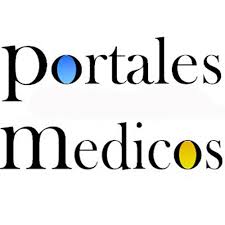Sepsis y shock séptico: enfoque actual del diagnóstico y manejo terapéutico
Sepsis and septic shock: current approach to diagnosis and therapeutic management
Resumen
La sepsis y el shock séptico siguen siendo un problema común en pacientes críticamente enfermos, siendo responsables de una alta morbilidad, mortalidad y consumo de recursos sanitarios en todo el mundo. El objetivo de la revisión fue describir el diagnóstico y manejo terapéutico de la sepsis y shock séptico basándose en la evidencia clínica publicada hasta el momento. La búsqueda bibliográfica fue de tipo no sistemática en las bases de datos PubMed, SciELO, Science Direct, EMBASE, LILACS y Redalyc. Los criterios de inclusión fueron publicaciones en inglés, portugués y español, en las que el título, palabras clave, incluyeron información relacionada con el tema, en el periodo comprendido del 2013-2022. Los resultados obtenidos mostraron que la sepsis y el shock séptico conforman cuadros en donde la detección temprana es una acción fundamental para reducir la mortalidad y falla multiorgánica relacionada. El control adecuado de la fuente, el inicio de una terapia antimicrobiana adecuada, la restauración de la perfusión tisular a través de la reanimación con líquidos y las intervenciones avanzadas para guiar la evaluación de la reanimación y la resolución de la disfunción orgánica deben ser parte del tratamiento inicial de estas entidades. Se concluye que el diagnóstico precoz y el inicio de una estrategia terapéutica multimodal, son factores decisivos al momento de su abordaje, para mejorar el pronóstico de los pacientes.
Sepsis and septic shock remain a common problem in critically ill patients, being responsible for high morbidity, mortality and consumption of health resources worldwide. The aim of the review was to describe the diagnosis and therapeutic management of sepsis and septic shock based on the clinical evidence published so far. The literature search was non-systematic in the databases PubMed, SciELO, Science Direct, EMBASE, LILACS and Redalyc. The inclusion criteria were publications in English, Portuguese and Spanish, in which the title, keywords, included information related to the topic, in the period from 2013-2022. The results obtained showed that sepsis and septic shock form pictures where early detection is a fundamental action to reduce mortality and related multi-organ failure. Adequate source control, initiation of appropriate antimicrobial therapy, restoration of tissue perfusion through fluid resuscitation, and advanced interventions to guide the evaluation of resuscitation and resolution of organ dysfunction should be part of the initial treatment of these entities. It is concluded that early diagnosis and the initiation of a multimodal therapeutic strategy are decisive factors at the time of its approach, to improve the prognosis of patients.
DOI:
Palabras clave
Texto completo:
PDFReferencias
Andrews, B., Semler, M. W., Muchemwa, L., Kelly, P., Lakhi, S., Heimburger, D. C., Mabula, C., Bwalya, M. & Bernard, G. (2017). Effect of an Early Resuscitation Protocol on In-hospital Mortality Among Adults With Sepsis and Hypotension. JAMA, 318(13), 1233. https://doi.org/10.1001/jama.2017.10913
Askim, Å., Moser, F., Gustad, L. T., Stene, H., Gundersen, M., Åsvold, B. O., Dale, J., Bjørnsen, L., Damås, J. & Solligård, E. (2017). Poor performance of quick-SOFA (qSOFA) score in predicting severe sepsis and mortality – a prospective study of patients admitted with infection to the emergency department. Scandinavian Journal of Trauma, Resuscitation and Emergency Medicine, 25(1), 56. https://doi.org/10.1186/s13049-017-0399-4
Branche, A., Neeser, O., Mueller, B. & Schuetz, P. (2019). Procalcitonin to guide antibiotic decision making. Current Opinion in Infectious Diseases, 32(2), 130–135. https://doi.org/10.1097/QCO.0000000000000522
Chavez-Vivas, M., Del Cristo-Martinez, A. y Tascon, A. (2018). Características epidemiológicas de pacientes con diagnóstico de sepsis y choque séptico en un hospital de la ciudad de Cali, Colombia. Acta Médica Costarricense, 60(4), 150–156. https://www.scielo.sa.cr/scielo.php?pid=S0001-60022018000400150&script=sci_abstract&tlng=es
Colon, D., Patel, J., Masic, D., Park, D. & Rech, M. (2020). Delayed vasopressor initiation is associated with increased mortality in patients with septic shock. Journal of Critical Care, 55, 145–148. https://doi.org/10.1016/j.jcrc.2019.11.004
Dellinger, R., Levy, M., Rhodes, A., Annane, D., Gerlach, H., Opal, S., Sevransky, J., Sprung, C., Douglas, I., Jaeschke, R., Osborn, T., Nunnally, M., Townsend, S., Reinhart, K., Kleinpell, R., Angus, D., Deutschman, C., Machado, F., Rubenfeld, G. & Moreno, R. (2013). Surviving Sepsis Campaign: International Guidelines for Management of Severe Sepsis and Septic Shock, 2012. Intensive Care Medicine, 39(2), 165–228. https://doi.org/10.1007/s00134-012-2769-8
Doyle, D. (2018). Clinical Early Warning Scores: New Clinical Tools in Evolution. The Open Anesthesia Journal, 12(1), 26–33. https://doi.org/10.2174/2589645801812010026
Dugar, S., Choudhary, C. & Duggal, A. (2020). Sepsis and septic shock: Guideline-based management. Cleveland Clinic Journal of Medicine, 87(1), 53–64. https://doi.org/10.3949/ccjm.87a.18143
Dupuis, C., Sonneville, R., Adrie, C., Gros, A., Darmon, M., Bouadma, L. y Timsit, J.-F. (2017). Impact of transfusion on patients with sepsis admitted in intensive care unit: a systematic review and meta-analysis. Annals of Intensive Care, 7(1), 5. https://doi.org/10.1186/s13613-016-0226-5
Eschborn, S. & Weitkamp, J.-H. (2019). Procalcitonin versus C-reactive protein: review of kinetics and performance for diagnosis of neonatal sepsis. Journal of Perinatology, 39(7), 893–903. https://doi.org/10.1038/s41372-019-0363-4
Evans, L., Rhodes, A., Alhazzani, W., Antonelli, M., Coopersmith, C., French, C., Machado, F., Mcintyre, L., Ostermann, M., Prescott, H., Schorr, C., Simpson, S., Wiersinga, W., Alshamsi, F., Angus, D. C., Arabi, Y., Azevedo, L., Beale, R., Beilman, G. & Levy, M. (2021). Surviving sepsis campaign: international guidelines for management of sepsis and septic shock 2021. Intensive Care Medicine, 47(11), 1181–1247. https://doi.org/10.1007/s00134-021-06506-y
Fiterre, C., Suárez, R., Sarduy, B., Castillo, F., Gutiérrez, N., Sabournin, E. y Ivars, V. (2017). Factores de riesgo asociados con sepsis del acceso vascular de pacientes en hemodiálisis. Revista Habanera de Ciencias Médicas, 17(2). http://www.revhabanera.sld.cu/index.php/rhab/article/view/2137/2080
Garbero, R. de F., Simões, A., Martins, G., Cruz, L. V. da, y von Zuben, V. (2019). SOFA and qSOFA at admission to the emergency department: Diagnostic sensitivity and relation with prognosis in patients with suspected infection. Turkish Journal of Emergency Medicine, 19(3), 106–110. https://doi.org/10.1016/j.tjem.2019.05.002
Garcia-Alvarez, M., Marik, P., y Bellomo, R. (2014). Sepsis-associated hyperlactatemia. Critical Care, 18(5), 503. https://doi.org/10.1186/s13054-014-0503-3
Hamzaoui, O. & Shi, R. (2020). Early norepinephrine use in septic shock. Journal of Thoracic Disease, 12(S1), S72–S77. https://doi.org/10.21037/jtd.2019.12.50
Hernández, G., Castro, R. & Bakker, J. (2020). Capillary refill time: the missing link between macrocirculation and microcirculation in septic shock? Journal of Thoracic Disease, 12(3), 1127–1129. https://doi.org/10.21037/jtd.2019.12.102
Hernández, G., Ospina-Tascón, G., Damiani, L., Estenssoro, E., Dubin, A., Hurtado, J., Friedman, G., Castro, R., Alegría, L., Teboul, J.-L., Cecconi, M., Ferri, G., Jibaja, M., Pairumani, R., Fernández, P., Barahona, D., Granda-Luna, V., Cavalcanti, A. B. & Bakker, J. (2019). Effect of a Resuscitation Strategy Targeting Peripheral Perfusion Status vs Serum Lactate Levels on 28-Day Mortality Among Patients With Septic Shock. JAMA, 321(7), 654. https://doi.org/10.1001/jama.2019.0071
Hernández, G., Teboul, J.-L. & Bakker, J. (2019). Norepinephrine in septic shock. Intensive Care Medicine, 45(5), 687–689. https://doi.org/10.1007/s00134-018-5499-8
Hotchkiss, R., Moldawer, L., Opal, S., Reinhart, K., Turnbull, I. & Vincent, J.-L. (2016). Sepsis and septic shock. Nature Reviews Disease Primers, 2(1), 16045. https://doi.org/10.1038/nrdp.2016.45
Hu, P., Chen, Y., Pang, J. & Chen, X. (2019). Association between IL-6 polymorphisms and sepsis. Innate Immunity, 25(8), 465–472. https://doi.org/10.1177/1753425919872818
Infante, M., Piñero, M., Goñi, I., Ferrando, C., Andía, R. y Girón, G. (2018). Administración de corticoides a los pacientes con sepsis grave y mejora de su mortalidad intrahospitalaria: Una revisión sistemática. Enfermería Global, 17(52), 612–639. https://doi.org/10.6018/EGLOBAL.17.4.321571
Jarczak, D., Kluge, S. & Nierhaus, A. (2021). Sepsis—Pathophysiology and Therapeutic Concepts. Frontiers in Medicine, 8. https://doi.org/10.3389/fmed.2021.628302
Joannidis, M., Wiedermann, C. & Ostermann, M. (2022). Ten myths about albumin. Intensive Care Medicine. https://doi.org/10.1007/s00134-022-06655-8
Kattan, E., Castro, R., Vera, M. y Hernández, G. (2020). Optimal target in septic shock resuscitation. Annals of Translational Medicine, 8(12), 789–789. https://doi.org/10.21037/atm-20-1120
Khwannimit, B., Bhurayanontachai, R. & Vattanavanit, V. (2019). Comparison of the accuracy of three early warning scores with SOFA score for predicting mortality in adult sepsis and septic shock patients admitted to intensive care unit. Heart and Lung, 48(3), 240–244. https://doi.org/10.1016/j.hrtlng.2019.02.005
Kim, S., Hwang, S., Kim, Y., Lee, J. & Cha, K.-C. (2019). Procalcitonin as a diagnostic marker for sepsis/septic shock in the emergency department; a study based on Sepsis-3 definition. The American Journal of Emergency Medicine, 37(2), 272–276. https://doi.org/10.1016/j.ajem.2018.05.047
Ladzinski, A., Thind, G. & Siuba, M. (2021). Rational Fluid Resuscitation in Sepsis for the Hospitalist. Mayo Clinic Proceedings, 96(9), 2464–2473. https://doi.org/10.1016/j.mayocp.2021.05.020
Lambden, S., Laterre, P., Levy, M. & Francois, B. (2019). The SOFA score—development, utility and challenges of accurate assessment in clinical trials. Critical Care, 23(1), 374. https://doi.org/10.1186/s13054-019-2663-7
Lee, Y., Gong, M., Chau, A., Wong, W., Bazoukis, G., Wong, S., Lampropoulos, K., Xia, Y., Li, G., Wong, M., Liu, T., Wu, W. K. & Tse, G. (2018). Pentraxin-3 as a marker of sepsis severity and predictor of mortality outcomes: A systematic review and meta-analysis. Journal of Infection, 76(1), 1–10. https://doi.org/10.1016/j.jinf.2017.10.016
Li, Y., Guo, J., Yang, H., Li, H., Shen, Y. & Zhang, D. (2021). Comparison of culture-negative and culture-positive sepsis or septic shock: a systematic review and meta-analysis. Critical Care, 25(1), 167. https://doi.org/10.1186/s13054-021-03592-8
Mahapatra, S. & Heffner, A. (2021). Septic Shock. StatPearls. https://www.ncbi.nlm.nih.gov/books/NBK430939/
Martin, D., Barragan, A., Garzón, D., Cuervo, F., Pinzón, J., Ramos, E. y Muñoz, C. (2017). Actualización en sepsis y choque séptico: nuevas definiciones y evaluación clínica. Acta Colombiana de Cuidado Intensivo, 17(3), 158–183. https://doi.org/10.1016/j.acci.2017.03.001
Mehta, A., Khalid, A. & Swaroop, M. (2020). Sepsis and Septic Shock. In Clinical Management of Shock - The Science and Art of Physiological Restoration. IntechOpen. https://doi.org/10.5772/intechopen.86800
Monnet, X. & Tyeboul, J.-L. (2018). My patient has received fluid. How to assess its efficacy and side effects? Annals of Intensive Care, 8(1), 54. https://doi.org/10.1186/s13613-018-0400-z
Ochagavía, A., Baigorri, F., Mesquida, J., Ayuela, J., Ferrándiz, A., García, X., Monge, M., Mateu, L., Sabatier, C., Clau-Terré, F., Vicho, R., Zapata, L., Maynar, J. y Gil, A. (2014). Monitorización hemodinámica en el paciente crítico. Recomendaciones del Grupo de Trabajo de Cuidados Intensivos Cardiológicos y RCP de la Sociedad Española de Medicina Intensiva, Crítica y Unidades Coronarias. Medicina Intensiva, 38(3), 154–169. https://doi.org/10.1016/j.medin.2013.10.006
Peake, S., Delaney, A., Bailey, M., Bellomo, R., Cameron, P. A., Cooper, D. J., Higgins, A. M., Holdgate, A., Howe, B. Webb, S. & Willians, P. (2014). Goal-Directed Resuscitation for Patients with Early Septic Shock. New England Journal of Medicine, 371(16), 1496–1506. https://doi.org/10.1056/NEJMoa1404380
Piccioni, A., Saviano, A., Cicchinelli, S., Valletta, F., Santoro, M. C., de Cunzo, T., Zanza, C., Longhitano, Y., Tullo, G., Tilli, P., Candelli, M., Covino, M. & Franceschi, F. (2021). Proadrenomedullin in Sepsis and Septic Shock: A Role in the Emergency Department. Medicina, 57(9), 920. https://doi.org/10.3390/medicina57090920
Prasad, P., Fang, M., Abe-Jones, Y., Calfee, C., Matthay, M. & Kangelaris, K. (2020). Time to Recognition of Sepsis in the Emergency Department Using Electronic Health Record Data. Critical Care Medicine, 48(2), 200–209. https://doi.org/10.1097/CCM.0000000000004132
Russell, J., Rush, B. & Boyd, J. (2018). Pathophysiology of Septic Shock. Critical Care Clinics, 34(1), 43–61. https://doi.org/10.1016/j.ccc.2017.08.005
Sakr, Y., Rubatto Birri, P., Kotfis, K., Nanchal, R., Shah, B., Kluge, S., Schroeder, M., Marshall, J. & Vincent, J.-L. (2017). Higher Fluid Balance Increases the Risk of Death From Sepsis. Critical Care Medicine, 45(3), 386–394. https://doi.org/10.1097/CCM.0000000000002189
Seymour, C., Gesten, F., Prescott, H., Friedrich, M., Iwashyna, T., Phillips, G., Lemeshow, S., Osborn, T., Terry, K. & Levy, M. (2017). Time to Treatment and Mortality during Mandated Emergency Care for Sepsis. New England Journal of Medicine, 376(23), 2235–2244. https://doi.org/10.1056/NEJMoa1703058
Sibaja, P., Sanchez, A., Villegas, G., Apestegui, A. & Mora, E. (2017). Management of the open abdomen using negative pressure wound therapy with instillation in severe abdominal sepsis. International Journal of Surgery Case Reports, 30, 26–30. https://doi.org/10.1016/j.ijscr.2016.11.024
Singer, M., Deutschman, C., Seymour, C., Shankar-Hari, M., Annane, D., Bauer, M., Bellomo, R., Bernard, G., Chiche, J.-D., Coopersmith, C., Hotchkiss, R., Levy, M., Marshall, J., Martin, G., Opal, S., Rubenfeld, G., van der Poll, T., Vincent, J.-L. & Angus, D. (2016). The Third International Consensus Definitions for Sepsis and Septic Shock (Sepsis-3). JAMA, 315(8), 801. https://doi.org/10.1001/jama.2016.0287
Song, J., Park, D., Moon, S., Cho, H.-J., Park, J., Seok, H. & Choi, W. (2019). Diagnostic and prognostic value of interleukin-6, pentraxin 3, and procalcitonin levels among sepsis and septic shock patients: a prospective controlled study according to the Sepsis-3 definitions. BMC Infectious Diseases, 19(1), 968. https://doi.org/10.1186/s12879-019-4618-7
Yealy, D., Kellum, J., Huang, D., Barnato, A., Weissfeld, L., Pike, F., Terndrup, T., Wang, H., Hou, P., LoVecchio, F., Filbin, M., Shapiro, N. & Angus, D. (2014). A Randomized Trial of Protocol-Based Care for Early Septic Shock. New England Journal of Medicine, 370(18), 1683–1693. https://doi.org/10.1056/NEJMoa1401602
Yeh, C., Wu, C., Liu, S. & Chen, K. (2019). Comparison of the accuracy of neutrophil CD64, procalcitonin, and C-reactive protein for sepsis identification: a systematic review and meta-analysis. Annals of Intensive Care, 9(1), 5. https://doi.org/10.1186/s13613-018-0479-2
Enlaces refback
- No hay ningún enlace refback.
Depósito Legal Electrónico: ME2016000090
ISSN Electrónico: 2610-797X
DOI: https://doi.org/10.53766/GICOS
| Se encuentra actualmente registrada y aceptada en las siguientes base de datos, directorios e índices: | |||
 | |||
 |  |  |  |
 |  | ||
 |  |  |  |
 |  |  |  |
 |  |  |  |
 |  | ||
![]()
Todos los documentos publicados en esta revista se distribuyen bajo una
Licencia Creative Commons Atribución -No Comercial- Compartir Igual 4.0 Internacional.
Por lo que el envío, procesamiento y publicación de artículos en la revista es totalmente gratuito.

